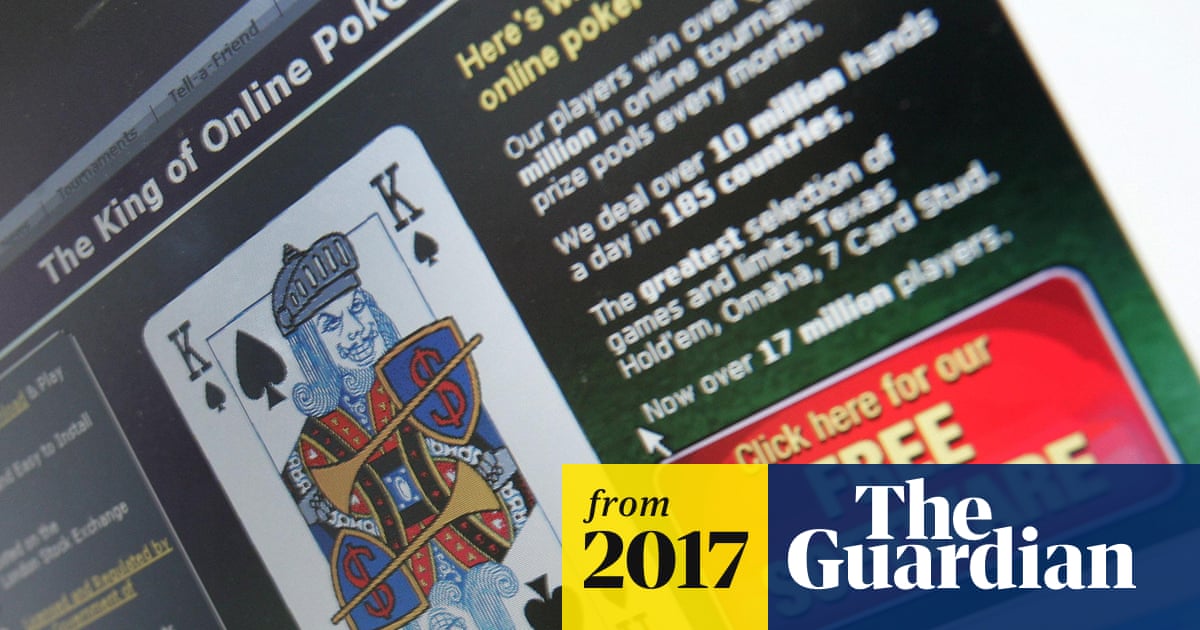Great Britain were required to hold a licence from the UK Gambling Commission (the Commission). Gambling on Great Britain: future changes to enforcement practices in the UK O. Breach is an example of repeat behaviour, (ii) whether the Commission has. Gambling behaviour in Great Britain in 2016 1. Executive summary. This report provides information about gambling behaviour in Great Britain using data combined from the Health Survey for England (HSE) 2016, the Scottish Health Survey (SHeS) 2016 and the Wales Omnibus in 2016. The main aims and objectives of this report are. Furthermore, it is estimated that around 0.8% of children aged 11–15 in Great Britain experience problems with their gambling behaviour and early onset of gambling in childhood is a known risk factor for subsequent problems (Blinn-Pike et al. 2010; Forrest and McHale 2018). It is in this context that the challenges of these seemingly.
The Gambling Commission has today published the latest Gambling Behaviour Report (that can be downloaded below). Using data combined from the Health Survey for England (HSE) 2016, the Scottish Health Survey (SHeS) 2016 and the Wales Omnibus in 2016, it outlines participation, at-risk gambling and problem gambling rates across Great Britain.
The data, drawn from field research carried out in 2016, shows that the rate of problem gambling across Britain was 0.7%. The Commission describes this as “statistically stable” but, interestingly, it compares with 0.8% in the previous such report published last year, on which we reported here.
Tim Miller, Executive Director at the Gambling Commission is quoted as saying:
“The Health Survey, along with all of our evidence and data, indicates that the problem gambling rate in Great Britain is stable. However, we want to see a sustained and significant reduction in the levels of problem gambling and will continue to drive the industry to build momentum towards this goal. Understanding the level of problem gambling is an important part of making gambling safer, but what this data won’t show is the extent of the harm someone may be experiencing, or the wider impact upon their families and their communities. That is why, together with our expert advisers the Responsible Gambling Strategy Board, we recently published a ground-breaking approach to understanding the full range of harms gambling can have on society.”
Gambling Behaviour In Great Britain 2017 Videos
The Commission’s website states that:
“This work, alongside the recently published research programme marks an important step in informing the direction of the next National Responsible Gambling Strategy, which will launch in April 2019. Comments on how the social cost of gambling-related harms can be measured and better understood, along with feedback on the research programme are welcomed by email: [email protected]“
Headline findings from the report are as follows:
- 1.2% of gamblers were classed as problem gamblers (0.7% of the population) – described by the Commission as “statistically stable, and consistent with both 2012 and 2015 reports”
- 2.4% of people were classed as low risk gamblers, and 1.1% of people as moderate risk gamblers
- Problem gambling was more prevalent among people who had participated in multiple gambling activities in the past year, than those that had just participated in one
- 57% of adults (aged 16 and over) in Great Britain had gambled in the past year – this is down by 6% compared to 2015
- Men (62%) are more likely to participate in gambling than women (52%)
- The most popular gambling activities were: National Lottery draws (41%), scratchcards (21%) and other lotteries (14%)
- Gambling participation (excluding National Lottery draws only) was highest among 25 – 34 year olds
- Gambling participation was lowest among non-drinkers (36%), followed by those who drank up to 14 units of alcohol per week (59%) and were highest for those who drank more than 14 units per week (69%)
- Problem gambling rates were higher among those with probable mental ill health (according to the GHQ-12 score), than those that indicated no evidence of probable mental ill health.
The UK Gambling Commission recently published its 2016 annual report on Great Britain’s gambling participation and consumer behavior, a 42-page document developed from data gathered from approximately 3,000 combined telephone and online surveys of people 16-years old and up. Respondents were asked about where and how often they gamble, what sorts of devices they use, and their perceptions and attitudes towards gambling, amongst many other data points. On the whole, the Commission found that 48 percent of Brits gambled within the past four weeks leading up to the survey, a 3 percent increase from the previous year. That breaks a two-year trend of declining gambling participation; about 55 percent of respondents gambled in 2013.
The participation highlights shouldn’t be too terribly surprising. A higher percentage of men than women gambled last year: 53 percent to 44 percent. Aside from a bit of a drop-off at the age of 65, in general, the older people were, the more likely they were to gamble. And again, as one might guess, the National Lottery was the most popular gambling activity.
Lottery participation, though, has been declining, and if the people whose only method of gambling was the lottery, total participation in any form of gambling decreases to 33 percent for 2016. When lottery-only players are excluded, it is the young generation, the 16-34 year-olds, that have the highest gambling participation.
As for online gambling, the report shows that 17 percent of respondents had gambled over the internet in the past four weeks, an uptick from the 15 percent in 2013. 21 percent of men and just 14 percent of women gambled online. The largest increases in online gambling participation came from the youngest age groups: 16-24 year olds showed a 7 percent increase to 16 percent and 25-34 year olds had their participation increase by 5 percent to 21 percent. The highest overall participation rate, though, was by 35-44 year olds, at 22 percent.
Back to lottery, it is by far the most popular form of gambling in the UK and why wouldn’t it be? It is extraordinarily accessible, requires absolutely no skills or knowledge, and has the potential to multiply one’s investment a gajillion times over in a matter of seconds. 30 percent of gambling activity was in the National Lottery, scratch cards comprised another 12 percent, and other lottery games were at 12 percent. Thus, about half the gambling activities in 2016 were lottery-related. As mentioned, though, National Lottery activity is way down – it was at 43 percent in 2013. The doubling of the price of a lottery ticket in October 2013 may be the major factor in this decrease, according to the report.
After those, sports betting was the next most popular activity at 7 percent, up from 4 percent the year before, but the Commission attributes a portion of that increase to heavy wagering on the UEFA European Football Championship and the Rio 2016 Olympics.
The most common answer to the question of gambling frequency was once per week, with 35 percent of respondents reporting that way, a 4 percent decrease from 2015. Once a month, but less than once a week followed at 29 percent, up 5 percent, while less than once per month stayed about flat at 13 percent. 23 percent of survey takers said they gambled twice or more per week, up 1 percent from the previous year.
The survey also used the short-form Problem Gambling Severity Index (PGSI) to come up with problem gambling-related statistics. The report warns, though, that because of the “small base sizes presented by the telephone survey, the mini-screen should not be considered the Commission’s comprehensive estimate of problem gambling rates in Great Britain.”
That said, 5.5 percent of the respondents identified as “low or moderate” risk gamblers. About twice as many men as women fell into this category and the age group with the most people identifying as “at-risk” was 25-34 year olds at 9.5 percent.
The overall number of 5.5 percent appears to be a huge leap from the 2.2 percent of the previous year, but the Commission says, “….it is important to note that due to the base sizes involved the estimates below are subject to some volatility and as such trend data should be treated with caution as none of the changes are statistically significant at the 95% level.”
As for “problem gambling,” 0.7 percent of respondents identified in that regard. Women were barely a blip on the problem gambling radar at just 0.1 percent, while 1.2 percent of men identified this way.

Finally (and there is much more in the report – we’re just hitting on some of it), survey takers were asked about their perceptions of gambling. Just 34.3 percent of those asked think gambling in the UK “is conducted fairly and can be trusted,” the fifth straight year of declining confidence in gambling operators. In 2011, nearly half of respondents answered favorably.
38.5 percent associated gambling with criminal activity, though interestingly, that number has gone down the last couple years.
On the whole, using a series of eight questions and coming up with a composite score, people have overall negative attitudes towards gambling. Using the classic “scale of 1 to 5” for the eight questions, the average total score was 21.5, on the negative side of the neutral 24. Men felt more positive about gambling than women – 22.6 to 20.6 – but this was still on the south side of neutral.
COMMENTS
Leave a Comment
LATEST NEWS
filter by
Dan Katz
29th February 2020 // UncategorisedIs the Coronavirus a Threat to the 2020 WSOP?
This has been one hell of a week. The coronavirus (COVID-19) is picking up steam globally. World financial markets have...
Dan Katz
26th February 2020 // UncategorisedSide Bets Available at PokerStars Poker Tables
Poker is gambling. We like to say that it is a game of skill – and it is – but it is also gambling. And that’s...
Dan Katz
17th February 2020 // News, Online Poker Action, Poker TournamentsWorld Series of Poker Expands Online Bracelet Schedule to 14 Events
On Thursday, the World Series of Poker released the schedule for this summer’s online bracelet events, to be hosted...
Dan Katz
8th February 2020 // Gossip, News, Online Poker ActionPhil Galfond Down €750,000 to VeniVidi1993 in Galfond Challenge
Look, I don’t typically make a habit of feeling bad when people of means lose money, but oh man, I am starting to get...

Dan Katz
2nd February 2020 // News, Online Poker ActionPokerStars, partypoker Launching Dueling Bounty Tourney Series on Super Bowl Sunday
The year 2020 is already one-twelfth gone. It seems like just yesterday that Larry David was arguing that it was too...
Haley Hintze
31st January 2020 // Misc, News, Poker TournamentsCoronavirus Outbreak Forces Postponement of Triton Jeju Series
The Triton Super High Roller Series scheduled for mid-Februry in Jeju, South Korea has become the first poker event...
TOP POKER SITES
- PokerStars
- $600
- 888 Poker
- $400
- William Hill
- £1,200
- Betsafe Poker
- $1,000
- Bet-at-Home
- €1,500
- Guts Poker
- $/€/£300
view all
POKER IN YOUR COUNTRY

Gambling Behaviour In Great Britain 2017 Route
- US POKER SITES
- CANADIAN POKER SITES
- UK POKER SITES
- EUROPEAN POKER SITES
- SOUTH AFRICAN POKER SITES
DEVICE COMPATIBILITY
Mobile Poker Sites
Linux Poker
Android Poker Sites
Mac Poker
GUIDES
Deposit Methods
Poker Networks
SPORTS BETTING GUIDE